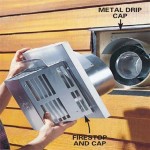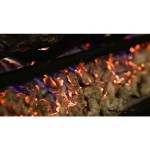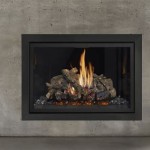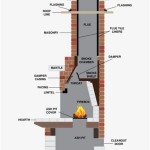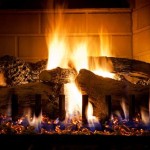How To Clean a Natural Stone Fireplace Surround
A natural stone fireplace surround adds elegance and warmth to any living space. From the rustic charm of fieldstone to the sophisticated beauty of marble, these surrounds become focal points within a room. However, like any surface exposed to the elements and daily use, they are susceptible to dust, soot, and other forms of grime. Proper cleaning is crucial not only to maintain the aesthetic appeal of the stone but also to prevent long-term damage and deterioration. Understanding the specific type of stone and utilizing appropriate cleaning methods ensures the longevity and beauty of the fireplace surround.
The porous nature of many natural stones makes them particularly vulnerable to staining and damage from harsh chemicals. Therefore, a gentle approach is generally recommended, starting with the least abrasive methods and progressively increasing the intensity only if necessary. Regular cleaning, even a quick dusting, can significantly reduce the need for intensive cleaning sessions and prevent the buildup of stubborn residue. By adhering to these principles, the natural beauty of the stone can be preserved for years to come.
Identifying the Type of Natural Stone
Before commencing any cleaning procedure, it is essential to identify the specific type of natural stone constituting the fireplace surround. Different stone types possess varying levels of porosity and react differently to various cleaning agents. Common natural stones used for fireplace surrounds include marble, granite, limestone, slate, and sandstone. Each of these materials requires a tailored approach to cleaning to avoid irreversible damage.
Marble, for instance, is a relatively soft and porous stone that is susceptible to etching from acidic substances. Granite, on the other hand, is much more durable and resistant to staining. Limestone is another porous stone that can be easily scratched, while slate is known for its durability and resistance to water damage. Sandstone, typically a porous stone, are susceptible to staining, and flaking if subjected to excessive moisture.
If the type of stone is unknown, consulting the original installation records or contacting the installer can provide this crucial information. Alternatively, a qualified stone restoration professional can identify the material. This identification process is a critical first step in selecting the appropriate cleaning methods and products.
Gathering the Necessary Cleaning Supplies
Once the stone type has been identified, the next step involves gathering the necessary cleaning supplies. Using the right tools and solutions will significantly impact the effectiveness of the cleaning process and minimize the risk of damage. A basic cleaning kit should include the following items:
*Soft-bristled brush:
A soft-bristled brush is essential for removing loose dust, dirt, and soot without scratching the stone surface. A toothbrush can be helpful for reaching tight corners and crevices. Avoid using wire brushes or abrasive scrub pads, as these can cause irreparable damage. *Microfiber cloths:
Microfiber cloths are ideal for wiping down the stone surface after cleaning. They are gentle, absorbent, and effectively lift dirt and grime without leaving streaks or residue. *pH-neutral cleaner:
A pH-neutral cleaner is the safest option for cleaning most natural stones. These cleaners are specifically formulated to be gentle on delicate surfaces and will not etch or discolor the stone. Ensure that the label explicitly states "pH-neutral" and that the product is suitable for natural stone. *Distilled water:
Distilled water is free of minerals and impurities that can leave behind water spots on the stone surface. It is recommended for rinsing the stone after cleaning. *Stone sealant (optional):
Applying a stone sealant after cleaning can help protect the stone from future staining and damage. However, it is important to choose a sealant specifically designed for the type of stone being treated. *Protective gloves:
Wearing gloves protects hands from cleaning solutions and potential irritants. *Eye protection:
Eye protection is recommended when using cleaning solutions to prevent accidental splashes and irritation.Avoid using harsh chemicals such as bleach, ammonia, vinegar, or abrasive cleaners. These substances can damage the stone surface, causing discoloration, etching, and scratching. It is always best to err on the side of caution and use gentle cleaning methods, especially when dealing with delicate stones like marble and limestone.
Step-by-Step Cleaning Procedure
Following a systematic cleaning procedure ensures thoroughness and minimizes the risk of overlooking any areas. The following steps outline a general approach to cleaning a natural stone fireplace surround, adaptable according to the specific stone and the extent of soiling.
Step 1: Preparation:
Before starting, protect the surrounding area by laying down drop cloths or plastic sheeting to prevent spills and splatters from damaging floors or furniture. Ensure that the fireplace is completely cool before commencing any cleaning. Remove any loose debris, such as ashes or larger particles, with a brush or vacuum cleaner.
Step 2: Dry Cleaning:
Use the soft-bristled brush to gently remove loose dust, dirt, and soot from the stone surface. Pay particular attention to crevices, corners, and areas around the firebox opening. Ensure all loose particles are removed before proceeding to wet cleaning.
Step 3: Wet Cleaning:
Mix a small amount of pH-neutral cleaner with distilled water according to the product instructions. Dampen a microfiber cloth with the cleaning solution and gently wipe down the stone surface. Avoid soaking the stone or allowing water to pool on the surface.
Step 4: Scrubbing (if necessary):
For stubborn stains or grime, gently scrub the affected area with the soft-bristled brush dampened with the cleaning solution. Use circular motions and avoid applying excessive pressure. If the stain persists, consider using a specialized stone cleaner designed for the specific type of stone.
Step 5: Rinsing:
After cleaning, rinse the stone surface with distilled water to remove any residual cleaner. Use a clean microfiber cloth dampened with distilled water to wipe down the stone. Ensure all traces of the cleaning solution are removed.
Step 6: Drying:
Thoroughly dry the stone surface with a clean, dry microfiber cloth. This will prevent water spots and help to maintain the natural luster of the stone. Allow the stone to air dry completely before applying any sealant.
Step 7: Sealing (optional):
If desired, apply a stone sealant according to the manufacturer's instructions. Ensure the stone is completely dry before applying the sealant. Sealing the stone will help to protect it from future staining and damage.Addressing Specific Stains and Issues
While the general cleaning procedure is effective for removing most surface dirt and grime, specific stains and issues may require additional attention. Understanding how to address common problems ensures the long-term preservation of the stone fireplace surround.
*Soot Stains:
Soot stains are a common problem for fireplace surrounds. To remove soot stains, try using a specialized soot remover designed for natural stone. Alternatively, make a paste of baking soda and water and apply it to the stain. Let it sit for a few minutes and then gently scrub with a soft-bristled brush. Rinse thoroughly with distilled water and dry with a clean microfiber cloth. *Water Stains:
Water stains can occur if water is allowed to pool on the stone surface. To remove water stains, try using a mild solution of distilled water and a pH-neutral cleaner. Gently wipe down the affected area with a dampened microfiber cloth and dry thoroughly. For stubborn water stains, consider using a specialized water stain remover designed for natural stone. *Rust Stains:
Rust stains can occur if metal objects are left in contact with the stone for an extended period. To remove rust stains, try using a specialized rust stain remover designed for natural stone. Follow the manufacturer's instructions carefully and test the product in an inconspicuous area first. Avoid using abrasive cleaners or harsh chemicals, as these can damage the stone. *Grease Stains:
Grease stains can occur from cooking or other activities near the fireplace. To remove grease stains, try using a degreasing cleaner designed for natural stone. Apply the cleaner to the stain and let it sit for a few minutes. Then, gently scrub with a soft-bristled brush and rinse thoroughly with distilled water. Dry with a clean microfiber cloth. *Efflorescence:
Efflorescence is a white, chalky deposit that can appear on stone surfaces due to the migration of salts and minerals. To remove efflorescence, try brushing the surface with a stiff-bristled brush to remove the loose deposits. Then, wipe down the area with a damp cloth and allow it to dry completely. If the efflorescence persists, consider using a specialized efflorescence remover designed for natural stone.For particularly stubborn stains or extensive damage, it is advisable to consult a professional stone restoration specialist. These professionals have the expertise and equipment to safely and effectively clean and restore natural stone surfaces, minimizing the risk of further damage.
Regular cleaning and maintenance are essential for preserving the beauty and longevity of a natural stone fireplace surround. By understanding the type of stone and using appropriate cleaning methods, the fireplace surround can remain a stunning focal point in the home for years to come. Consistent care, including dusting and gentle cleaning, prevents the buildup of stubborn stains and grime, reducing the need for intensive cleaning sessions. Addressing stains promptly and avoiding harsh chemicals will ensure that the natural beauty of the stone is maintained and protected.
Furthermore, consider the impact of environmental factors on the fireplace surround. Proper ventilation can help to reduce the buildup of soot and smoke residue. Regular inspections can identify potential problems early on, allowing for timely intervention. By taking a proactive approach to maintenance, the aesthetic appeal and structural integrity of the natural stone fireplace surround can be preserved indefinitely.

How To Clean A Neglected Stone Fireplace Georgian Cottage

How To Clean A Stone Fireplace Homeowner S Guide Bob Vila

How To Clean A Limestone Fireplace

How To Clean A Limestone Fireplace Stamford Stone At Home

How To Clean A Neglected Stone Fireplace Georgian Cottage

How To Clean A Stone Fireplace Flemington Granite

How To Clean Stone Fireplace Mantels

Removing Soot Stains From Bricks And Stone Chimneys Com

Stone Fireplace Anyone Know How To Clean This Hometalk

How To Clean A Stone Fireplace Homeowner S Guide Bob Vila

